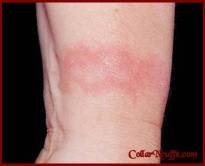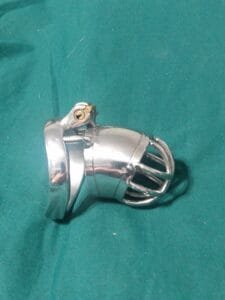Our bondage sex and leather bondage toys and clothing bring us so much joy. The better we care for them, the longer they’ll give us pleasure. The following Leather Bondage Toys and Clothing Cleaning Guide you’ll some techniques for you to keep your toys in tip top condition.
Why Cleaning Leather Bondage Gear is Important
Leather bondage toys and clothing are popular choices for those exploring their desires in the BDSM community. However, proper maintenance is vital to ensure their longevity, hygienic use, and overall quality. Regular cleaning not only enhances the appearance but also ensures the safety of the items during use.
Essential Cleaning Materials
To clean your leather bondage items effectively, you’ll need some basic supplies. A gentle leather cleaner, soft cloths, and a moisturizing conditioner for leather are crucial. Avoid harsh chemicals or excessive water as these can damage the material. Check your bondage toys and clothing for specific cleaning instructions to maintain their integrity.

Table of Contents
The BDSM Femdom lifestyle has several objects and accessories that make it possible for people in the lifestyle to enhance their BDSM experience. There are some accessories that BDSM consists of, like a collar, whip, and restraints. These accessories are not cheap and you might have paid a considerable amount to buy them, depending on where you live and how available these objects are.
It goes without saying that once you have bought these objects and accessories, you have to take care of them. Here are some important tips about BDSM accessories care.
Leather play warning NOTES
While leather articles and accessories are commonly used in the realms of BDSM, one should take into consideration several factors before using them on the submissive. There is a possibility that some people’s skin has an allergy to leather. This allergy can be harmless and just cause some discomfort to the individual, or even be serious enough to cause itches, rashes and other skin ailments.

For leather clothing and leather lingerie, it is recommended to look for manufacturers that no longer use nickel plating. Aside from the above mentioned problems, many people have a sensitivity or allergy to nickel which can cause painful irritations where it comes into contact with the skin.
Leather Bondage Toys and Clothing Cleaning Guide:
Saddle Soap:
- Saddle Soap is a preparatory compound which contains mild soap and also some ingredients like neatsfoot oil, lanolin and glycerin. Saddle Soap also contains bee’s wax which protects leather. Therefore, Saddle Soap is used for cleaning, softening and conditioning leather. In fact, the name Saddle Soap is derived from its use to take care of horse tacks and saddles.

Mink Oil:

- As the name suggests, Mink oil is made of the thick fatty layer that the minks have under their skin. Mink is a rich source of palmitoleic acid. This acid is physical properties that are similar to the sebum found in humans. Therefore, it is used in many cosmetic and medical products. This oil is used for preserving and treating oil.
- Mink oil is known to increase the waterproofing capabilities of leather, as well as preserving leather and making it softer.
Cleaning Bondage Sex Toys
Most bondage sex toys can be cleaned with soap and warm water, although leather toys need additional cleansing and reconditioning so the leather doesn’t get ruined. Using a mixture of 70% rubbing alcohol and hydrogen peroxide will disinfect and kill bacteria on leather, that soap and water may not get to. Soak the parts that came into contact with bodily fluids and let stand and few minutes. Rinse and let air dry thoroughly. Then use a leather conditioner to revitalize your toy. All sex toys should be cleaned periodically even if they don’t come into contact with bodily fluids. Even something as simple as blindfolds should be cleaned. Makeup and eye goop can get on it and that can be transferred to another person or infect the same person’s eye if there’s too much build up. Use common sense and keep your sex toys clean.
Sharing and cleaning Bondage Sex Toys
If you’re sharing your sex toys with a few people and it comes into contact with bodily fluids, make sure it is cleaned and disinfected before it comes into contact with a new person. If you plan to play with more then more one person, you should have separate toys for each person. That’s the safest and label each toy to keep track of who’s who. Remember, this is all part of being a responsible sexually active adult.
Penetration Bondage Sex Toys
- If you plan to insert any part of the sex toy (handle of whip or paddle, etc.) into your partner’s orifice, cover it with a condom.
Storage of Bondage Sex Toys
- While preserving leather items, make sure that you do not store them in moist areas. Also you need to ensure that the leather items do not become wet. Before using water on tops of a leather item, like a leather whip, make sure that it is well protected and cleaned thoroughly afterwards. The leather items like whips, wrist and ankle restraints, etc should be kept in a cool and dry place. As is visible in several BDSM themed video and other art forms, it is a good idea to store the whip with the tails hanging down. This ensures that the tails of the whip do not become entangled while kept.
- Keep each bondage sex toys stored separately. Don’t keep whips and chains together. The heavy chains can pull on some fabrics and ruin them. I find it best to keep all leather items together, all nylon items together, all metal items together, etc. It may sound like a pain, but the better you treat and store your toys, the longer they’ll last. I’ve also found that plastic locking bags, like ziploc, are a great way to keep bondage toys from mixing and tangling together.
Leather Bondage Toys and Clothing Cleaning Guide

The care of your leather clothing and leather lingerie is very important to keep it in like new peak play condition.
The most important thing to do is to follow the manufacturers care instructions.
Some other things that you can do are:
- If your leather clothing or leather lingerie becomes wet, let it dry at room temperature.
- If your leather clothing or leather lingerie becomes stained, gently blot liquid stains with a clean cloth.
- It is a good idea to use a repellent product to condition your leather item.
- Store your leather clothing or leather lingerie on a wide wooden, plastic or padded hanger to help maintain the shape
- Do not store your leather clothing or leather lingerie in a hot or damp area.
- Leather clothing and leather lingerie needs to be stored in a temperature controlled environment.
- If you will be covering your leather when you are storing it; cover it with a breathable cloth like cotton sheets.
- Do not cover your leather clothing or leather lingerie with plastic. The plastic will cause the leather to dry out.
- Avoid exposing your leather to direct sunlight for prolonged periods of time.
All leather items can last for a lifetime if they are regularly maintained and treated well. Leather is skin and just as you would clean your own, you need to clean and nourish your leather to help retain its durability and texture.
Preservation:
Leather conditioners should be applied with a soft cloth to not only help in the cleaning process, but to also provide good water repellent properties, such as the mink oil mentioned above.
Cleaning:
- Continual contact with moisture (sweat, rain, urine, alcohol, etc.,) can cause the leather to stiffen. Before you start cleaning the full surface of your leather item, test out the cleaner on a smaller, less visible area. Wait a few minutes. If you don’t notice any color distortion, proceed with the rest of the item.
- When cleaning your leather NEVER use strong detergents such as laundry detergent. Always choose a product that helps preserve the leather’s natural lubricating oils rather than strip them away. Most cleaning products sold in department and shoe stores are safe. But, it never hurts to ask.
- Warm soapy water, using baby shampoo or a similar soap, is the best cleaning solution for removing difficult or oily marks, stains or odors. Rub baby shampoo into the area of any oily stains before rinsing. Try to avoid cleaners that leave any sort of grease or residue. Residue can make leather vulnerable to bacteria, which will tarnish the leather and eventually break down the stitching. To remove the excess cleaner, use a slightly dampened cloth or a small brush around the stitching.
- Make sure soap/shampoo is rinsed out thoroughly to avoid stiffening.
- Leather should never be dried in front of a direct heat source as this damages the leather and also causes the hide to stiffen. Make sure to clean and treat your leather before it’s dry. Never use heat to dry leather (it should air-dry) and always stuff the garment while it’s drying, in order to make sure it maintains its shape.
- When storing leather articles, don’t throw them to the bottom of the wardrobe, instead hang them up and make sure they are ventilated to prevent them from molding.
- Get a Nubuck cloth; it’s a great leather care tool for cleaning and restoring your item to its original look.
- Clean your leather goods as often as you need to and make sure they’re dust-free at all times.
- Never use caustic household chemicals to clean your leather items.
Removing Stains and Smells from Leather clothing
Sweat
- When the leather becomes slightly stiffened or an itchy irritation occurs, this is usually a sign that sweat has permeated the leather. Washing in warm water with baby shampoo or fabric softener will help soften the leather and remove the irritation.
Odors
- To remove odors, use a teaspoon of bicarbonate soda crystals in about 1 quart/liter of warm water and let the solution soak into the skin
Oils and Oil Based Lubricants
- These can be difficult to remove. Use baby shampoo or a similar soap in a few tablespoons of water and rubbing slowly onto the spots can help their removal. Rinse thoroughly. As another alternative, most oil or grease stains can be lifted by grinding up blackboard chalk, sprinkling it onto the affected area, and leaving the powder on for one full day.
Wax
- Place blotting paper or brown paper on the leather and then apply a cool/moderate iron to remove wax from leather. Keep applying the iron on clean blotting or brown paper, to the wax spot until the paper is no longer absorbing the wax.
Urine Stains
- Uric acid found in urine is very damaging to leather. When leather has been in contact with urine, it should be washed out immediately after use with warm soapy water (baby shampoo). Leaving urine-stained items overnight can cause irreparable damage.
Blood Stains
- Leather becomes stiff and odorous if blood is allowed to dry. If blood gets on your leather clothing or leather lingerie, hand wash immediately.
Hygiene
- Germs can be killed by soaking leather clothes in 1 teaspoon bleach to 1 gallon of water for up to 1/2 hour. Rinse thoroughly and hand wash immediately after bleaching. Bleaching can damage leather so minimal use is necessary.
Removing Mold and Mildew
- In case mildew builds up, mix one cup of rubbing alcohol with one cup of water. Dip a clean cloth in the solution and wipe the mildewed area. For more persistent mildew, use mild soap containing germicide and water. Wipe the excess soap with a clean cloth and let dry.
Metal Fittings
- Most buckles, rivets, studs, snaps, rings, etc., are nickel plated steel with the exception of chain which is chrome plated steel and other metal fittings that are brass coated. If the fittings are not cleaned regularly or cleaned and dried after contact with moisture, rusting will occur. When cleaning leather with conditioner, applying the conditioner to the metal fittings will increase their longevity. Surface rust can be removed with chrome cleaner, Autosol, WD40 (nickel), or Brasso (brass). For leather clothing and leather lingerie, it is recommended to look for manufacturers that no longer use nickel plating. As above mentioned in Leather play warning notes, many people have a sensitivity or allergy to nickel which can cause painful irritations where it comes into contact with the skin.
Many bondage toys and leather clothing are expensive so make sure you treat them well our Leather Bondage Toys and Clothing Cleaning Guide will keep them going for years if not decades with proper care. Many bondage, especially leather items can last you a lifetime. So if you care for your toy, clean it properly and store it safely, you’ll get a lot of mileage out it.
Resource Article : MissBonnie © CollarNcuffs.com







